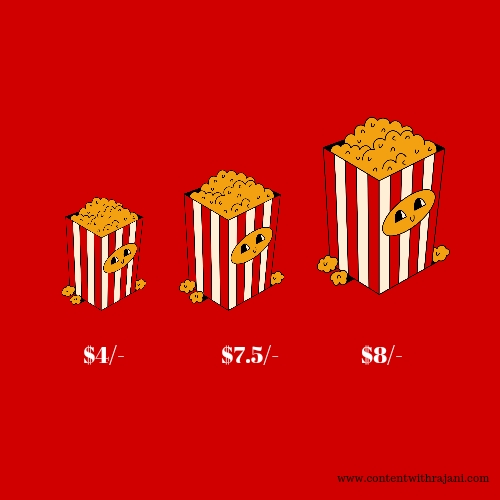You pounce on the sight of a “Buy 1 get 1 free” deal. After a lot of contemplation and reflection, your hands ultimately reach to order the “big-sized” popcorn. On New Year’s, you consistently opt for the quarterly gym subscription over the monthly one, even though you… well, no personal attacks here.
Have you ever wondered if your purchasing decisions are solely your own? Or is it all pre-decided by the seller?
It’s not a secret for leading global businesses to influence the buyer’s subconscious to pick up their product. Apart from packaging, another crucial factor that significantly reduces your target market’s decision-making period is pricing.
According to Neuromarketing, psychology-backed pricing strategies are proven to help boost sales. In this article, we have shared the top 6 pricing strategies able to influence customer purchase decisions, without them ever guessing your light subtle push.
Top 6 psychology-backed pricing strategies to help boost sales –
- The Charming effect of prices ending with 9 or 99

Also known as “Charm pricing”, this globally famous trick involves ending a product’s price with .99 rather than a whole number to make it appear cheaper and a better deal.
For instance, slashing the price of $200.00 to $199.99. It doesn’t affect your revenue but produces the left-digit bias. It is based on the research that because we read numbers from left to right, we immediately perceive 199 as less than 200, even if it makes a difference of a mere penny.
However, it only works on everyday utilities and in fields where people are hesitant to invest lavishly. For luxury brands, the .99 technique can actually backfire.
- Speak sophistication with the even pricing

The Even pricing, also known as the “round pricing” is exactly the opposite of the charm pricing. Luxury brands exploit this technique to exude a sense of luxury and premium service.
In this approach, prices are rounded up to the closest whole number or multiple of ten, such as $80 or $450 to feed on the consumer’s perception that they are buying something high quality that’s only available to the affluent or elite.
- Fuel urgency with the scarcity method

The “limited seats left”, “offer till stocks last” or “limit 5 per customer” are all the scarcity pricing strategies in action. It creates a sense of urgency in the consumer’s mind – a sense of now or never.
As a result, they end up making a swift purchase decision, often in bulk, in the fear of missing out. The urgency compels them subconsciously to seal the deal, especially in those times when they are not so sure about the investment.
- Become the ultimate crowd-puller with the word “FREE”!

If there’s a phrase more delightful than “I love you,” it would be – “Buy one get one free.” This term has the magical effect of capturing attention to the extent that individuals start contemplating purchases they wouldn’t typically consider or need, simply because it includes something extra at no cost.
What’s more interesting is that the offer “Buy 2 get 50% off” doesn’t elicit much response, even though both of these offers essentially convey the same meaning.
- Hack your ROI with the Decoy Pricing

The decoy effect illustrates that when faced with a choice between two options, introducing a third, less appealing option (the decoy) can significantly shape our perception and influence our decision-making process.
Positioned strategically, this “decoy” is intentionally inferior to one choice (the competitor) and superior to another (the target), steering our perception and guiding us toward a specific preference. Its purpose is not to sell the decoy item, but the superior option which generates better ROI.
The decoy is slightly inferior to one option (the competitor) while completely superior to the other alternative (the target). Its purpose is not to sell the decoy item, but the superior option which generates better ROI.
Take the scenario of choosing popcorn sizes at a store – a small bag for $4, a medium for $7.5, and a large for $8. Even though you just need a quick snack, the allure of a better deal prompts your choice, and you end up buying a large popcorn instead of a small one.
- The copy keeps the score

Simply changing the copy can skyrocket your sales too. It implies, not only your pricing but how you present your pricing with an adjoined message influences your revenue as well.
A recent discovery on consumer behavior was made in a study conducted in 2006, where it was found that simply changing the messaging from “a $5 fee” to “a small $5 fee” elevated a DVD subscription trial rate by 20%.
Way to go…
People don’t buy products or services. They buy emotions. They don’t follow trends, they chase the feeling of appearing relevant. The pricing strategies discussed in this article speaks to their underlying emotions.
From subscriptions to groceries to service-based businesses, these pricing tricks on psychology can be used throughout to augment sales and make the customer choose you over your competitors.


